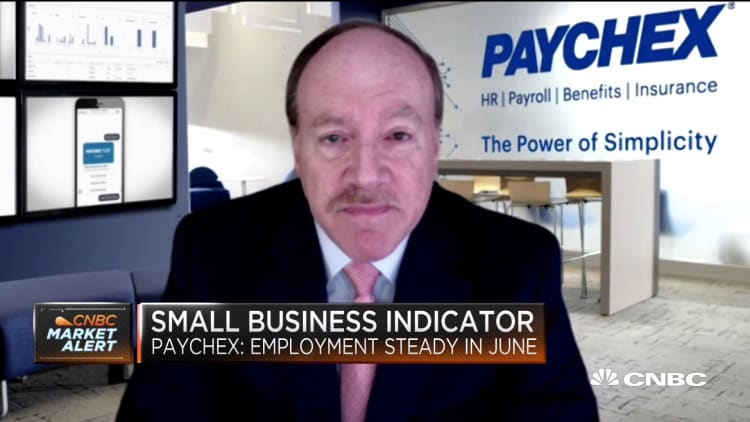The financial aid that jobless workers have been receiving to shore up household income during the coronavirus pandemic is poised for a dramatic reduction in just a few weeks.
The CARES Act, a federal relief law enacted in March, provided unemployed Americans with an extra $600 a week in assistance. That federally funded supplement adds to the traditional benefits provided by states.
As a result of that policy, the average American has gotten about $980 a week from the unemployment system, according to a CNBC analysis of Labor Department data.
That's roughly equal to the lost weekly wages for the average worker.
61% reduction
However, that supplement will end after July 31, absent an extension from Congress — which isn't a given due to opposition from Republican lawmakers.
If it ends, benefits will decrease substantially for the nearly 31 million Americans receiving unemployment benefits.
Instead of receiving about $980 a week, the average American would get about $380 — a reduction of about 61%.
The average worker, instead of fully replacing lost wages, would replace about a third of their prior paycheck, according to a January report published by the W.E. Upjohn Institute for Employment Research.
The experience for workers will differ dramatically based on geography, since states vary in the generosity of their benefit payments.
More from Invest in You:
These 5 remote jobs pay more than $60,000 a year
Six strategies to help recent college grads find work right now
5 jobs with six-figure salaries that let you work from home
The average worker in Mississippi, the least generous state, received $213 a week in unemployment benefits before the pandemic, according to Labor Department data.
In Massachusetts, the most generous state, the average recipient got $552.
Maximum and minimum benefits
States set caps and minimum benefit amounts for weekly jobless aid. These are the lower and upper bounds that an unemployed worker can expect to get from the system.
Most states set minimums below $100 a week.
Hawaii's minimum, the lowest of any state, will be just $5 a week if the federal $600-a-week supplement expires after July. (This low minimum relative to other states is partly attributable to looser eligibility rules, according to economists. Workers can qualify for benefits in Hawaii with a lower level of annual earnings than in other states. Meanwhile, Hawaii pays the second-highest average weekly benefit, at $542.)
Massachusetts pays unemployed workers up to $1,234 a week, the highest maximum benefit of any state.
By contrast, Mississippi has the lowest maximum among states, paying up to $235 a week.
With the extra $600 a week, jobless benefits are more generous than they've been at any time since the unemployment insurance system was created in the 1930s, according to labor economists.
Democrats want to extend the $600 benefit to prevent income from falling severely after July. Republicans, who believe the benefit is a disincentive to work, want to eliminate it or replace it with a different policy, like a bonus for those who find a job.

SIGN UP: Money 101 is an 8-week learning course to financial freedom, delivered weekly to your inbox.
CHECK OUT: This single mom made $126,000 in a year from an online caramel-apple making course via Grow with Acorns+CNBC.
Disclosure: NBCUniversal and Comcast Ventures are investors in Acorns.






